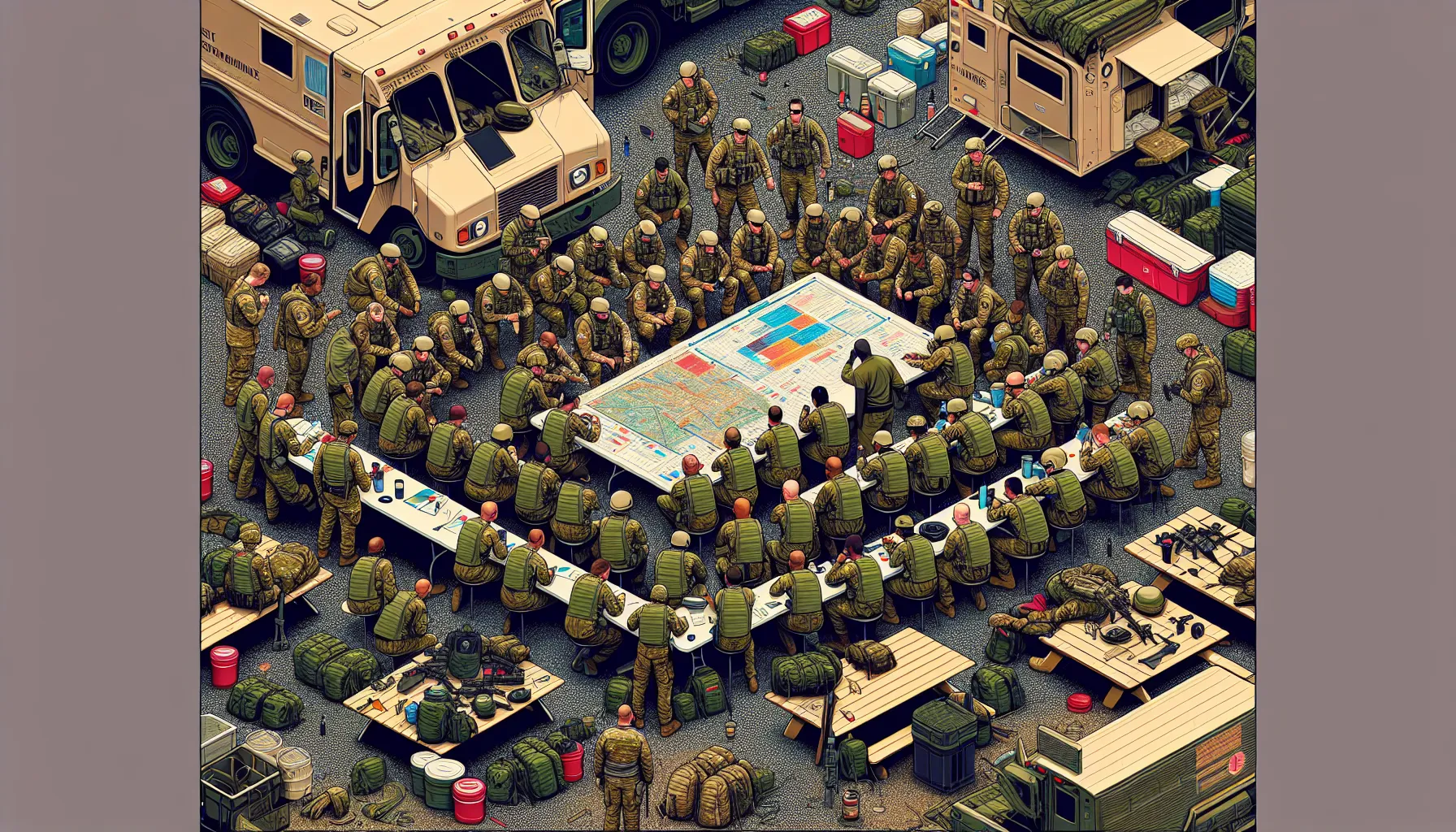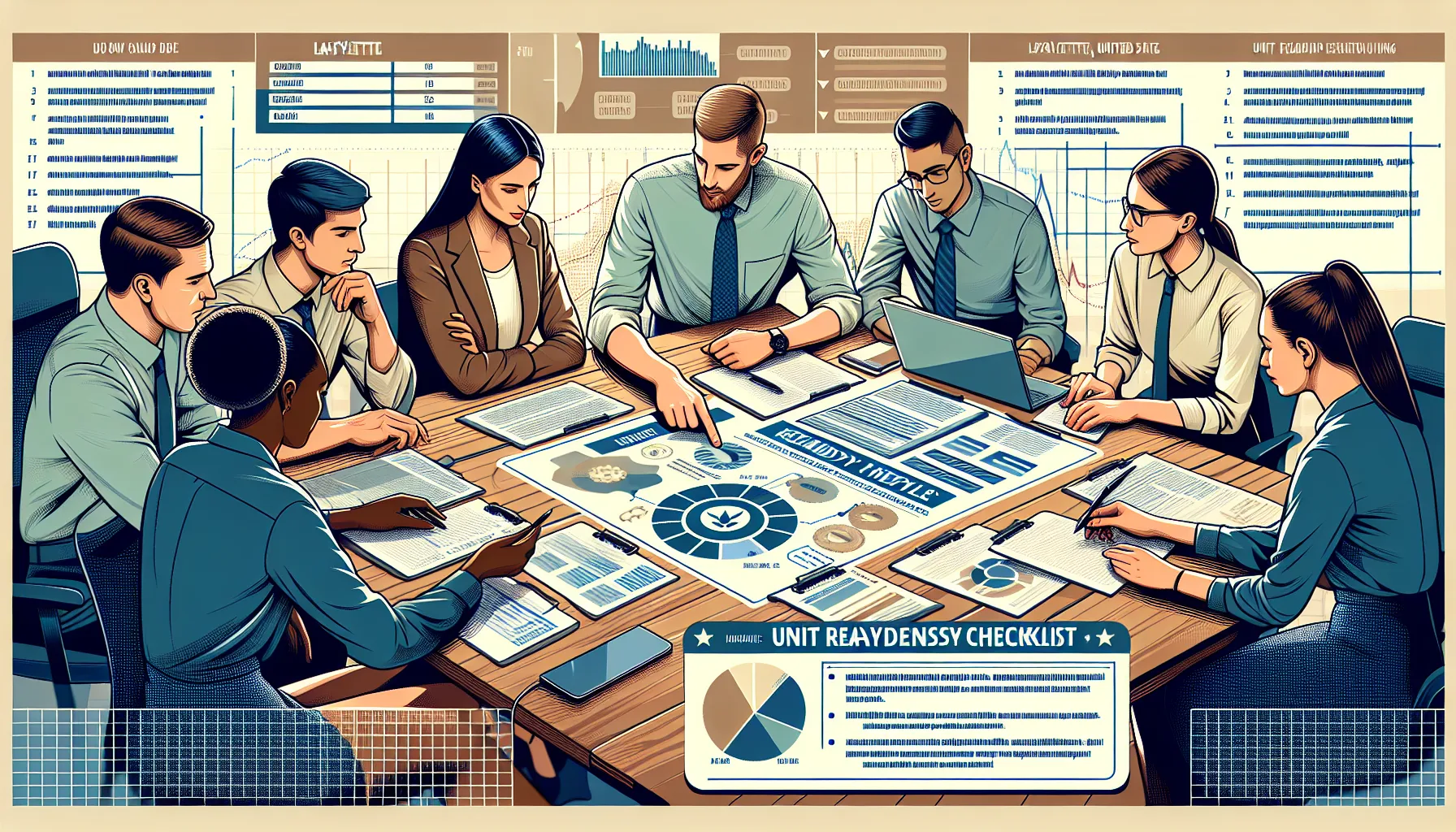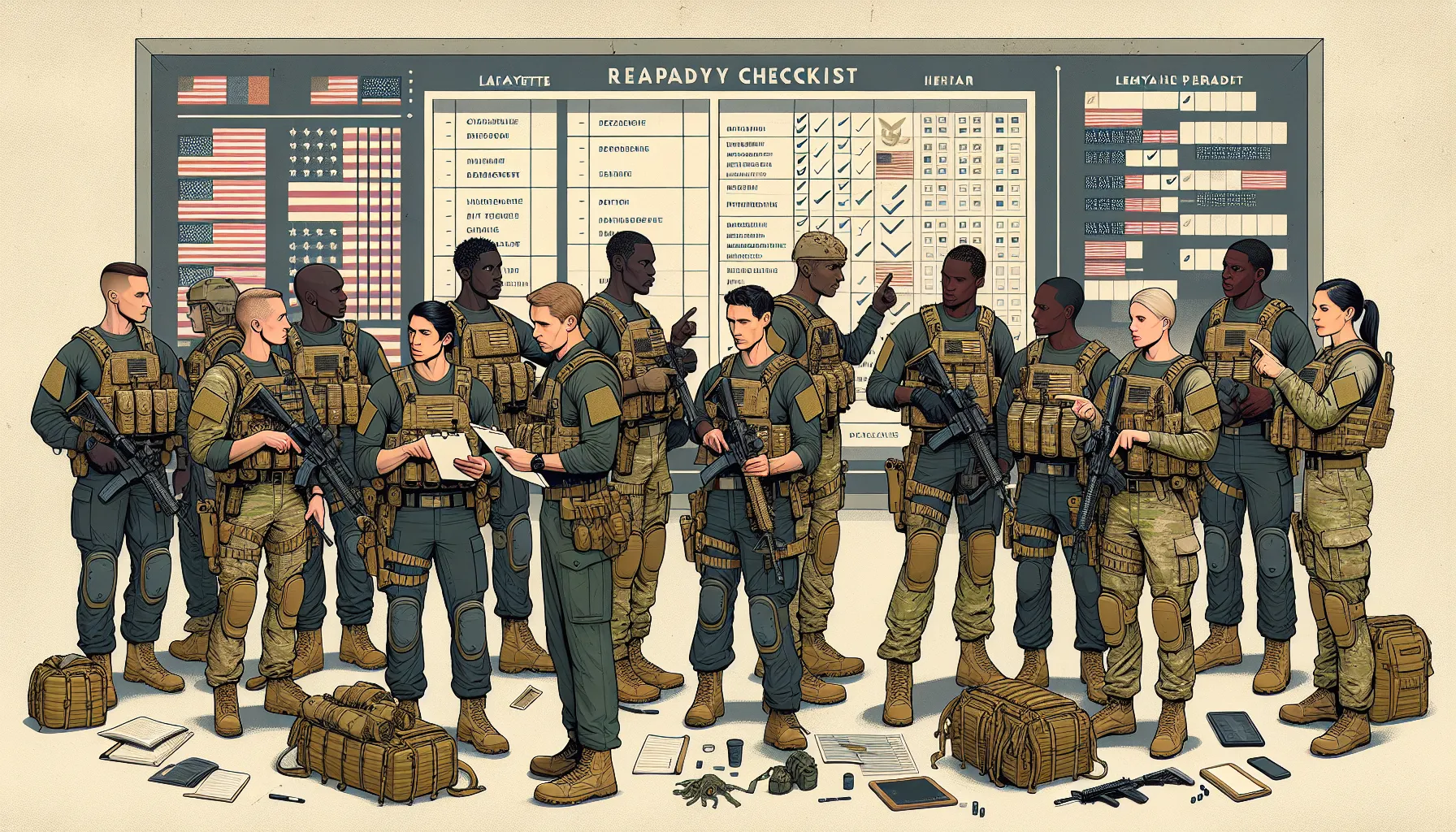Key Takeaways
- A unit readiness checklist tailored for Lafayette ensures teams are fully prepared by focusing on personnel, equipment, training, and communication needs.
- Regularly updating and reviewing the checklist helps leaders stay responsive to changing operational demands and prevents critical details from being overlooked.
- Assigning clear responsibilities to team members increases accountability and promotes consistent completion of readiness tasks.
- Addressing common challenges—such as staffing gaps, equipment issues, and certification lapses—strengthens overall unit reliability.
- Cross-training, open communication, and scheduled reviews are effective strategies for overcoming obstacles and maintaining continuous readiness.
I know how important it is to feel confident and prepared before any mission or task. If you’re responsible for a team in Lafayette, you might sometimes wonder if you’ve covered every critical detail. Have you ever wished for a simple tool to help you keep track of what matters most?
A unit readiness checklist can make the difference between feeling overwhelmed and feeling in control. It helps you spot gaps and address them before they become problems. Curious about what should be on your checklist or how to use it effectively? Let’s explore how a well-structured approach can support your team’s readiness and peace of mind.
Understanding Unit Readiness in Lafayette
Unit readiness in Lafayette centers on making sure each team has the right resources, training, and support for every assignment. I see many leaders juggling various demands, and it’s common to wonder if everything’s truly covered. Do you ever feel uncertain about whether your team is prepared for unexpected changes in schedule or resources?
Preparing for common challenges means assessing personnel readiness, equipment availability, and procedural compliance. I recommend starting with key areas important to Lafayette’s operational environment. For example, checking that team members complete their certifications, verifying equipment maintenance, and reviewing communication protocols help avoid disruptions. Have you noticed recurring gaps in your unit’s preparedness? Identifying these patterns allows teams to fix issues before they affect performance.
Having a readiness checklist specific to Lafayette helps leaders stay organized in busy periods. Whether facing seasonal storms, new assignments, or shift rotations, proactive planning makes a noticeable difference. I encourage you to ask yourself—what information would help you feel more confident before each operation? By focusing on clear needs and adapting your checklist, you can support goals, strengthen reliability, and build trust within your team.
Key Components of a Unit Readiness Checklist Lafayette

Unit readiness checklists in Lafayette highlight the details that support strong teams. I include checkpoints that focus on people, resources, training, and communication. Which areas matter most to you right now?
Personnel Preparedness
Unit readiness in Lafayette starts with qualified team members. I review staff lists for current certifications, physical health records, and training documentation. For example, deployment rosters, medical clearances, and CPR cards all fit here. Do your team rosters reflect up-to-date information and emerging needs?
Equipment and Supplies
I inventory gear and consumables to prevent shortages. This includes personal protective equipment, radios, medical kits, and fuel supplies. I track inspection dates and flag expiring items. Have you noticed gaps in equipment that slow your team down?
Training and Compliance
Consistent training and policy awareness make a difference in Lafayette’s operational tempo. I confirm attendance in recent drills, certification renewals, and mandatory briefings. Items like fire safety training logs and compliance checkboxes stay visible in my checklist. What training requirements tend to get overlooked during busy periods?
Communication Protocols
Clear communication links directly impact team effectiveness. I list contact rosters, emergency notification procedures, and frequency lists under this section. Backup plans for digital or radio outages also play a role. Are communication channels clear for everyone on your team today?
Steps to Implementing the Checklist

Building a reliable unit readiness checklist in Lafayette starts with straightforward steps. I focus on practical actions that help leaders drive real improvement and create an organized team environment.
Assigning Responsibilities
Clear responsibility means every checklist item gets managed and nothing slips through the cracks. I identify strong team members for key roles, matching each task with someone accountable. For example, assigning equipment checks to a logistics lead reduces oversight, while designating a training coordinator helps track certifications. How do you currently match tasks with your team’s strengths? Involving each person in this process prompts buy-in and builds accountability from the start.
Regular Review and Updates
Frequent review keeps the checklist relevant to Lafayette’s changing needs. I schedule monthly check-ins where the team reviews each item, updates statuses, and notes shifting priorities. For instance, after an equipment update or policy change, I review related checklist sections immediately. What intervals work best for your team’s pace and mission? Open feedback during these sessions highlights missing steps or new best practices, which I quickly add to keep the checklist efficient. Regular updates turn this tool into an evolving source of confidence, not just a static document.
Common Challenges and Solutions

Unit readiness in Lafayette brings up several challenges. I often hear concerns about time constraints, resource shortages, and unexpected absences. Do you find that staffing gaps or last-minute schedule changes make it tough to check everything off your list?
Personnel Gaps
Staff changes or unplanned absences can disrupt routines. I recommend cross-training staff so others can fill critical roles at short notice. Have backup contacts for every key task. How do you currently respond when someone’s out?
Incomplete Equipment Checks
Missing or outdated gear slows response and leaves teams unprepared. I keep a shared inventory list updated after every use. Visual checks during shift changes help catch issues early. What system works best for tracking your team’s supplies?
Communication Breakdowns
Messages sometimes don’t reach everyone. I use group messaging platforms and hold short daily huddles to share updates. Posting checklists in a common area keeps everyone in the loop. How often have you found that information gaps caused confusion?
Training and Credential Lapses
Expired certifications lead to compliance problems. I set calendar reminders for renewal dates and encourage early completion of required training. Regularly reviewing deadlines during meetings keeps this on everyone’s radar. What reminders help your team stay current?
Every team faces some of these obstacles. What specific hurdles are most common in your experience? With practical solutions and open conversations, you can make readiness a daily habit, not a stressor.
Conclusion
Unit readiness in Lafayette isn’t just about ticking boxes—it’s about building trust and resilience within your team. When I use a tailored checklist, I know I’m setting my unit up for success no matter what challenges come our way.
Taking the time to refine and update my checklist pays off when the unexpected happens. With the right approach, I can lead with confidence knowing my team is always ready for the mission ahead.
Frequently Asked Questions
What is a unit readiness checklist?
A unit readiness checklist is a tool for leaders to track essential team details, such as personnel readiness, equipment status, training, and communication protocols. It helps identify gaps and ensure the team is fully prepared for assignments.
Why is unit readiness important in Lafayette?
Unit readiness in Lafayette is crucial because it ensures teams have the right resources, training, and communication for their specific operational environment, reducing risks of disruptions during assignments.
What key areas should be included in a unit readiness checklist?
A checklist should focus on personnel qualifications, equipment and supply inventory, completed training and certifications, compliance with policies, and clear communication protocols within the team.
How can leaders effectively implement a unit readiness checklist?
Leaders should assign clear responsibilities for each checklist item, review and update the list regularly, and tailor checkpoints to their team’s unique needs to ensure ongoing effectiveness.
What challenges do teams in Lafayette face regarding readiness?
Common challenges include limited time, resource shortages, personnel gaps, and unexpected absences. Proactive planning and open communication can help overcome these issues.
What are some practical solutions to maintain readiness?
Solutions include cross-training staff, keeping an up-to-date equipment inventory, using group messaging for quick communication, and setting reminders for training renewals and certifications.
How often should a unit readiness checklist be reviewed?
The checklist should be reviewed at least monthly or after major assignments to incorporate feedback, address changes, and maintain ongoing team preparedness.
Can a unit readiness checklist help reduce stress for leaders?
Yes, using a checklist provides peace of mind by organizing tasks, tracking progress, and making readiness a regular habit instead of a last-minute worry.
